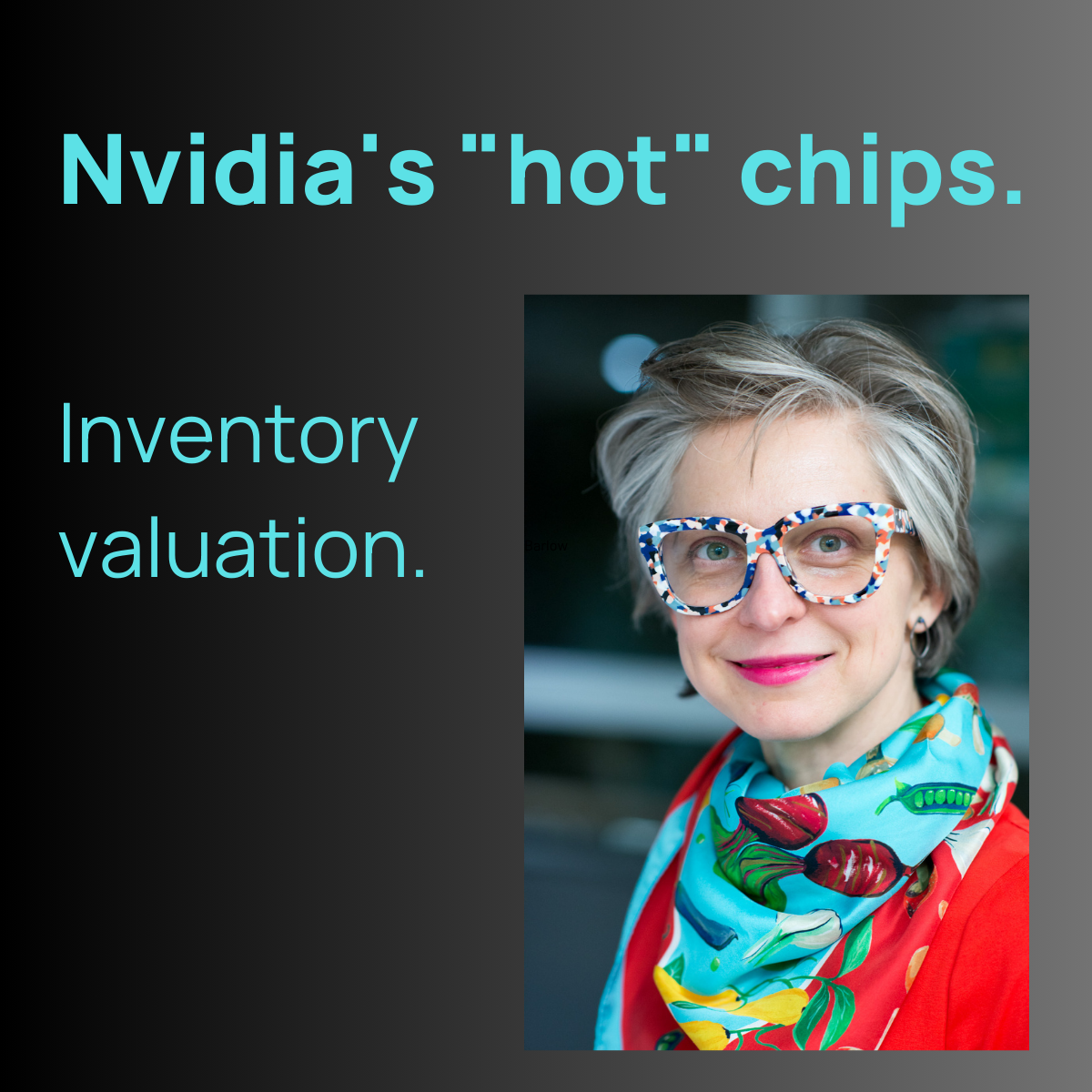Nvidia's GPU chips in accounting.
Why is it that despite selling a high-demand product, NVIDIA is not fully able to recover their inventory costs?
“The more inventory a company has, the less likely they will have what they need.” Taiichi Ohno
Let`s have a look at measurement of inventories according to IAS 2 Inventories.
📍 The principle:
Inventories shall be measured at the lower of:
Cost
and
Net realisable value (NRV).
NRV is the net amount that an entity expects to realise from the sale of inventory in the ordinary course of business.
💡 Rationale (IAS 2.28):
The cost of inventories may not be recoverable if those inventories:
are damaged,
if they have become wholly or partially obsolete, or
if their selling prices have declined.
The practice of writing inventories down below cost to net realisable value is consistent with the view that assets should not be carried in excess of amounts expected to be realised from their sale or use.
Let's take the example of NVIDIA's GPU chips, “the hottest commodity in Silicon Valley since the debut of ChatGPT” according to Financial Times.
The chips are part NVIDIA`s data-centres, functioning as a single giant computer, needed for the development/ deployment of modern AI applications.
The demand is exceptionally high, with more than 1.7 million “Hopper” GPU chips sold to main customers in 2024 (Omdia via Fin. Times).
And yet, over the nine months of the fiscal year 2025 (ending January`25), NVIDIA wrote down inventory and excess inventory purchase obligations worth $2 billion.
The expense presented in Cost of Sales lowered the gross profit margin by 2%.
The same pattern applied in fiscal year 2024 (gross margin impact: -2.7%) and 2023 (-7.5%).
Why is it that despite selling a high-demand product, NVIDIA is not fully able to recover their inventory costs?
Factors on the supply side:
rapid technological changes to meet customers’ demand,
obsolescence of recently introduced technology and products,
manufacturing process: production capacities are restricted and the mass production is challenging (design, engineering). It might take 12+ months for chips to get manufactured forcing NVIDIA to enter long-term purchase & capacity commitments with their suppliers. In the end effect this policy might lead to overstocking with less powerful or desired chips and/ or inability to sell them over their costs.
Factors on the demand side:
competition: Main customers (Microsoft, Amazon, Google) are building their own chips to become less dependent on NVIDIA. This leads to potential sales price declines.
politics: Governmental restrictions in the US targeting GPUs associated with AI might impair the saleability of the chips.
The topic of inventory valuation might not be associated with complexity & judgement by some accountants.
Yet, it might be worth taking a closer look at in your practice.
Last bit:
NVIDIA’s Blackwell AI chip GB200 costs between $30 ths. to $40 ths.
1 kilogram of gold as of December 23rd 2024 cost ca. $ 84 ths.
